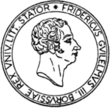The “Z25” transistor computer by Konrad Zuse
German computer pioneer Konrad Zuse developed the first ideas concerning a computer in 1936 already and built the mechanical computer “Z1”. It was one of the first universal computers that could calculate in binary. Those first experiences Zuse made then contributed to the further development of the computer. After electromechanical variants with relays and electronic calculators with vacuum tubes, he finally ended up working with transistor computers in the 60s which he manufactured in his own company.
The early computer “Z25” that we are introducing here had been manufactured from 1961 on and could be used in many fields of science and technology as well as administration and commercial data processing, e.g. the model in the Arithmeum helped calculate measuring data for the Landesamt für Vermessungswesen (Land surveyor’s office) at the University in Essen.
Every machine had a control panel to enter commands in zeros and ones.
Additionally, a modified teleprinter was connected so that every command could also be transferred to the machine via an alphabetic abbreviation by the use of a keyboard.
The calculating unit executed the necessary calculations on the instructions of the control unit.
Single commands and data, but also programs could be stored in the magnetic-core memory which could hold up to 12,288 words. Furthermore, there was the option to connect auxiliary magnetic drum or magnetic tape stores.
More extensive amounts of data and programs were also stored on punched tape that served as external storage medium. They were created by a punched tape perforator integrated into the teleprinter and then transferred back into the memory of the machine by the corresponding reader. However, the punched tape perforator as well as the reader could also be connected to the Z25 as additional peripheral devices. There was also the possibility of linking several Z25s so that they could cope with bigger problems in a network. 128 Zuse “Z25”s were built all in all.
The model in the Arithmeum is in full original working order. The emulator that Fabian Erdmann, student of Computer Science, has designed as a part of his bachelor’s thesis gives a wonderful insight into the capabilities of this computer of those days. You can enter small programs in binary yourself and even the sounds of turning the computer on, tapping the keys and other functions have been convincingly adapted from the original Zuse Z25. We are glad to give you detailed insight into the world of computers more than 50 years ago.
A short introduction
At the start of the emulation, you are in a frontal view in front of the Z25, from where you have access to the teleprinter and the control panel located in the top right-hand drawer. Both input components can be selected and operated using the mouse and keyboard. On the left-hand side is the core of the computer, which contains the arithmetic unit, control unit and memory. To the left is the data memory consisting of magnetic drums. The status of the memory can be called up by clicking the mouse again. The camera symbol in the top right-hand corner of the screen can be used to return from a selected component of the computer to the starting position. Information on operating the Z25 in the form of an explanation of the command set and an example application can be called up via the question mark symbol.
The icon on the left-hand side of the screen opens a window which first displays the memory overview. This provides an overview of the commands already entered and the current content of the memory. This can be displayed via a drop-down menu in binary, decimal or command representation. Memory overview, command overview, punched card overview and options can be selected via a further drop-down menu. The command overview provides a tabular overview of the command set of the Z25, while the punched card overview allows you to save and load created programs in the form of punched cards.
The machine can be reset and the emulation can be saved and terminated under Options. Unfortunately, the save function is not available in the online version, so that entered and saved programs cannot be called up again later. We hope you enjoy using the Zuse Z25!






